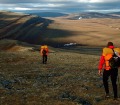Switching from traditional footwear to barefoot shoes can offer benefits for both your feet and your entire body. However, since barefoot shoes require a different type of movement and load on your feet, a gradual transition is essential to avoid injuries and to slowly build up the strength of your foot muscles.
Overview of the Article
This article provides a detailed guide on how to transition to barefoot shoes gradually. We will explore the reasons for making the switch, present a practical step-by-step plan, discuss potential challenges, and offer expert opinions and everyday tips.
Why a Gradual Transition is Important
Avoiding Injuries
Wearing barefoot shoes without an appropriate transition period can lead to overuse injuries. The muscles and joints in your feet, which are usually supported by traditional shoes, need time to adjust to the new strain. A sudden change can result in pain, strains, or even chronic injuries.
Building Foot Muscle Strength
Barefoot shoes encourage natural foot movement, which requires greater activation of the foot muscles. A gradual transition allows the muscles, tendons, and ligaments to strengthen slowly, helping the foot anatomy to adapt to the new demands.
First Steps: Preparing for the Transition
Analyzing Current Foot Health
Before beginning the transition to barefoot shoes, it’s important to assess the current health of your feet. Individuals with existing foot problems, such as plantar fasciitis or severe overpronation, should consider consulting an orthopedist to address any potential risks before making the switch.
Choosing the Right Barefoot Shoes
Selecting the right pair of barefoot shoes is crucial. Look for a flexible sole that offers sufficient freedom of movement and ample space for your toes. There are various models for different activities, ranging from everyday shoes to sports shoes—choose the model that best suits your needs.
The Transition Process: Step by Step
Start with Short Walks
The first step in transitioning to barefoot shoes should be to start with short walks. Wear the shoes for brief distances initially, allowing your feet to get used to the new sensation and the different strain. Begin with walks of around 15 to 20 minutes.
Gradual Increase in Load
Once your feet have adjusted to barefoot shoes, you can gradually increase the wearing time and the intensity of activities. Slowly extend the duration of your walks and gradually incorporate the shoes into other activities, such as light jogging or daily errands.
Integration into Daily Life
As your feet adapt to the barefoot shoes, you can begin wearing them regularly in daily life. Ensure that you don’t rush the process—it can take several weeks or even months for your feet to fully adapt.
Exercises to Strengthen Foot Muscles
Foot Stretching and Strengthening
Regular stretching and strengthening exercises for your feet are essential to facilitate the transition to barefoot shoes. Exercises such as picking up objects with your toes or rolling a tennis ball under your foot can help strengthen the foot muscles and increase flexibility.
Balance and Stability Exercises
Balance and stability exercises, such as standing on one leg or balancing on a wobble cushion, promote ankle stability and improve overall body coordination. These exercises prepare your feet and body for the demands of barefoot running.
Common Challenges and How to Overcome Them
Dealing with Initial Pain
Initial pain and muscle soreness are common when you start wearing barefoot shoes. These discomforts usually indicate that your muscles are working and adjusting. To alleviate pain, take regular breaks and stretch your feet.
Avoiding Overload
Overload injuries are a risk if the transition is too quick. Make sure you don’t rush the process and listen to your body. If you experience pain, reduce the time you wear barefoot shoes and allow your feet time to recover.
Expert Opinions and Experiences
Quotes from Orthopedists and Physiotherapists
Orthopedists and physiotherapists emphasize the importance of a slow and controlled transition to barefoot shoes. Dr. Markus Müller, an orthopedist, says, “The switch to barefoot shoes should be done gradually to avoid overload injuries and to effectively strengthen the foot muscles.”
Testimonials from Barefoot Shoe Users
Many long-term users of barefoot shoes report positive experiences after the adjustment phase. Anna, an enthusiastic barefoot runner, shares, “After taking the transition slowly, I now feel much more stable and balanced when walking and running.”
Long-Term Benefits of Barefoot Running
Improved Posture
In the long term, wearing barefoot shoes can lead to better posture. By strengthening the foot muscles and encouraging a natural gait, the body becomes more stable and balanced, which can reduce back and joint pain.
Reduced Risk of Foot Problems
Barefoot shoes promote a natural foot position, which can reduce the risk of foot problems such as flat feet, hallux valgus, or heel pain. By strengthening the muscles and promoting healthy foot movement, many of these issues can be avoided in the long run.
Practical Tips for Everyday Life with Barefoot Shoes
Choosing Suitable Surfaces
Especially in the beginning, it’s important to walk on suitable surfaces. Soft, natural grounds such as grass or forest floors are ideal for easing into barefoot shoes without putting too much strain on your feet. Avoid hard, uneven surfaces until your feet have fully adapted.
Care and Maintenance of the Shoes
Barefoot shoes require regular care, just like any other shoes, to extend their lifespan. Clean your shoes regularly, especially after walking on muddy or wet surfaces, and allow them to dry completely before wearing them again. Also, keep an eye out for signs of wear on the soles and replace the shoes as needed.
Future Trends and Developments
Innovations in Barefoot Shoe Design
The future of barefoot shoes lies in the continued development of materials and design. Manufacturers are constantly working on creating shoes that are lighter, more flexible, and more breathable without compromising protection and durability.
Integration of Technology
With the advancing digitalization, the barefoot shoe sector could also benefit from technological innovations. For instance, sensors integrated into the shoes could analyze foot positioning and gait, providing the wearer with real-time feedback to further optimize foot health.
Conclusion
Summary of Key Points
The transition to barefoot shoes should be done slowly and consciously to avoid injuries and to strengthen foot muscles. With the right preparations, a step-by-step plan, and regular exercises, the switch can lead to improved foot health and a more natural gait.
Final Thoughts and Recommendations
Barefoot shoes offer an excellent way to promote the natural function of your feet and enhance overall well-being. However, the success of the transition depends on your patience and awareness of your body’s needs. Those who plan and execute the transition carefully will reap the long-term benefits of barefoot running.












